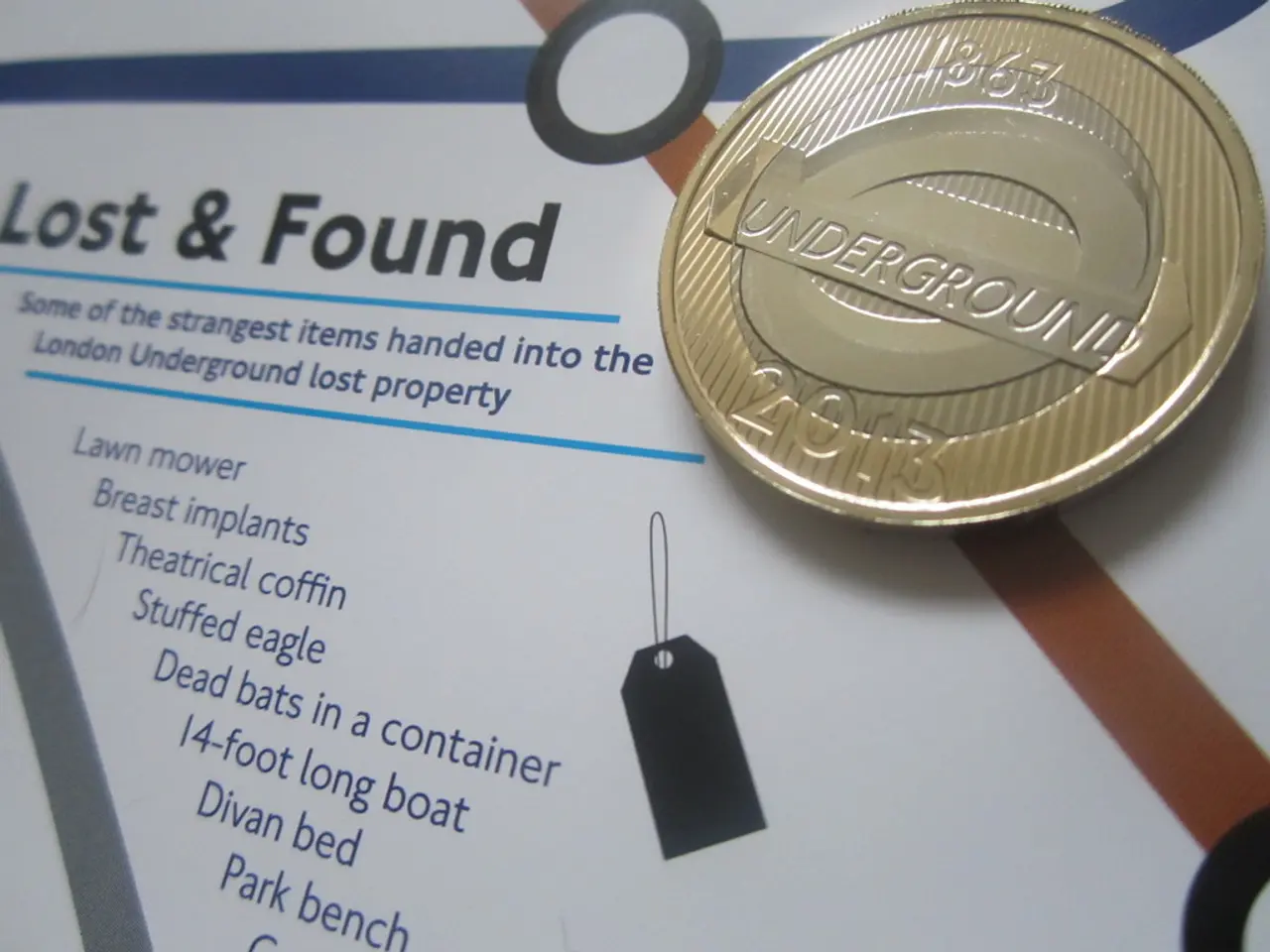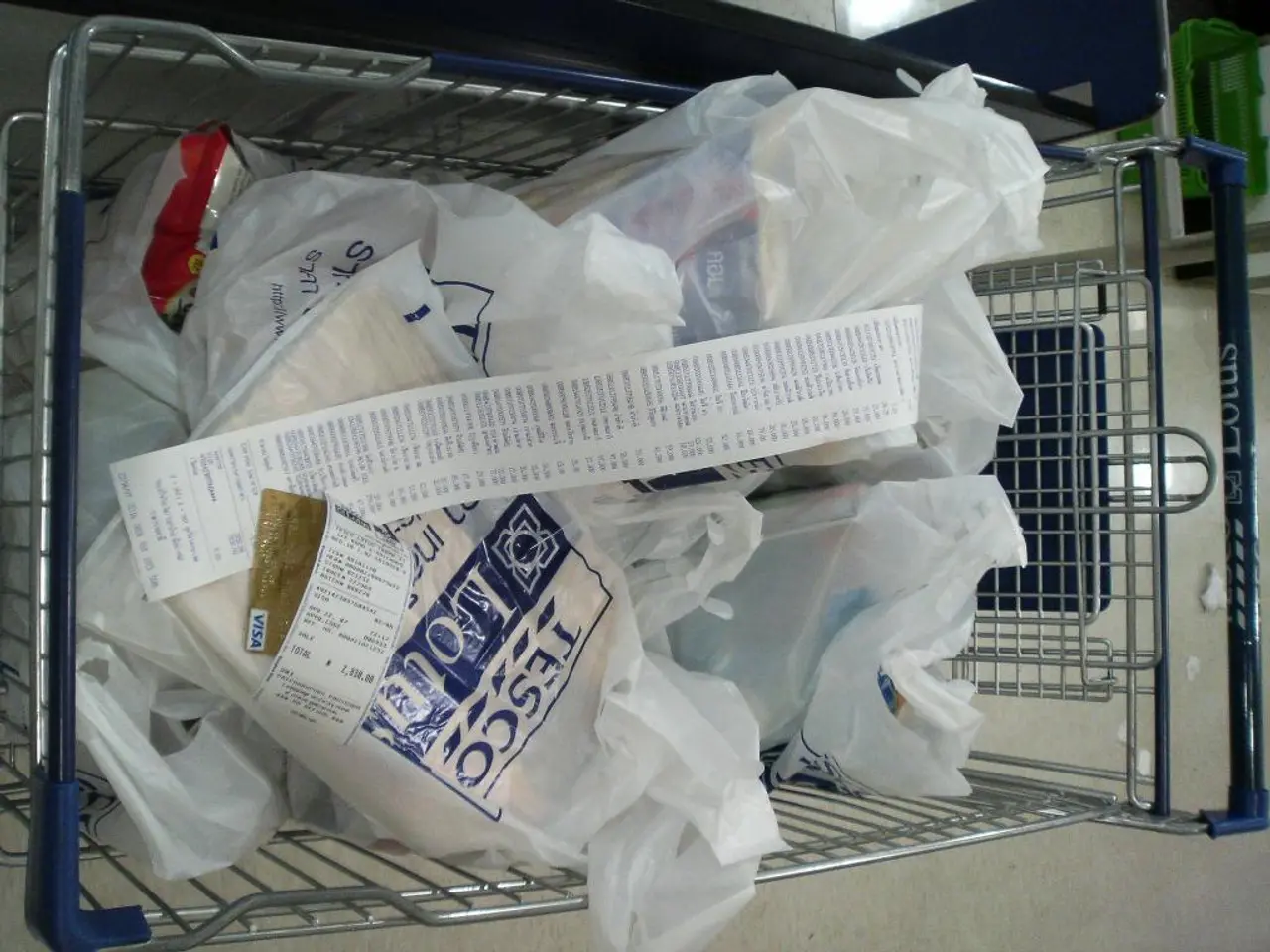Financial institutions are experiencing unease as interest rates plummet
In the ever-evolving Russian financial landscape, depositors and savers are navigating a new reality as the Central Bank of Russia (CBR) embarks on a cautious journey to lower its key interest rate. This shift, which began in June 2025, is set to continue at the CBR's July 2025 meeting, according to recent reports.
The decision to ease the monetary policy is primarily driven by the slowing inflation in Russia, which is currently hovering near the lower bound of the CBR's forecast (7–8% for year-end 2025). This trend supports the case for further rate cuts and a lower key rate, with a potential downward revision of the inflation forecast enabling an even lower projected path for the key rate, facilitating further cuts.
However, the scale of these cuts is expected to be modest rather than sharp, given the persistent pro-inflationary risks and the need to avoid excessive credit growth and spending surges that could destabilize inflation control. The CBR is carefully balancing the easing path to avoid undermining the positive economic signals of stabilized deposit growth, the strengthening of banks' resource bases, and controlled inflation.
This gradual decline in deposit rates is reflected in the current market trends. Deposit rates across major Russian banks have already diminished, with the average maximum deposit rates in the top 10 banks falling below 19% per annum in early June 2025, down from higher levels in previous periods. Despite these cuts, Russian depositors are still earning real returns above inflation, and interest income from savings products remains significant—projected to reach about 9 trillion rubles for 2025.
In response to the changing rate environment, depositors have developed investment strategies for deposits, focusing on short-term and medium-term deposits, savings accounts with increased interest rates, and "ladder deposits". Some depositors have even started shifting towards deposits with longer maturity dates as early as late spring due to market expectations of a decrease in the key rate.
Several banks, including Gazprombank, VTB, Alfa Bank, Renessans, Sberbank, MTS Bank, RSKH, Sinara, Dom.RF, Ak Bars, Bystro Bank, and others, have announced adjustments to the rates on certain deposits and savings accounts. Notable fixed-term, non-accumulative deposit options are available, such as the 18.2% interest offered by Dom.RF for a 1-year fixed term, the 17% interest offered by Realist Bank for an accumulative deposit with a 370-day term, and the 18% interest offered by Postabank for a 368-day classic deposit.
However, the outlook for deposit and savings account rates in Russia is not entirely clear-cut. Regulators' statements are not entirely clear-cut, and the potential for further adjustments remains. Kirill Tremasov, advisor to the Chairman of the Bank of Russia, has noted that while the price surge has been contained, there is no certainty about the sustainability of the slowdown. Anatoly Aksakov, head of the Financial Market Committee, believes that banks are preparing for a consistent easing of monetary policy by Elvira Nabullina's department.
In summary, while the CBR of Russia is poised to continue lowering the key interest rate in the near term, deposit and savings account rates will gradually decrease but are expected to remain attractive enough to retain saver interest for some time. The outlook is for a cautious, sustained easing cycle with deposit rates reflecting this moderation, avoiding sharp drops that could disrupt the economic balance. Savers may therefore see moderately lower yields but still positive real returns relative to inflation in the medium term.
- The gradual lowering of the key interest rate by the Central Bank of Russia is primarily driven by the slowing inflation, which has created an opportunity for further investment in businesses and the finance sector.
- To counteract the effects of the declining deposit rates, many Russian savers have devised investment strategies, such as focusing on short-term and medium-term deposits, savings accounts with increased interest rates, and "ladder deposits", to ensure they still receive returns above inflation.








